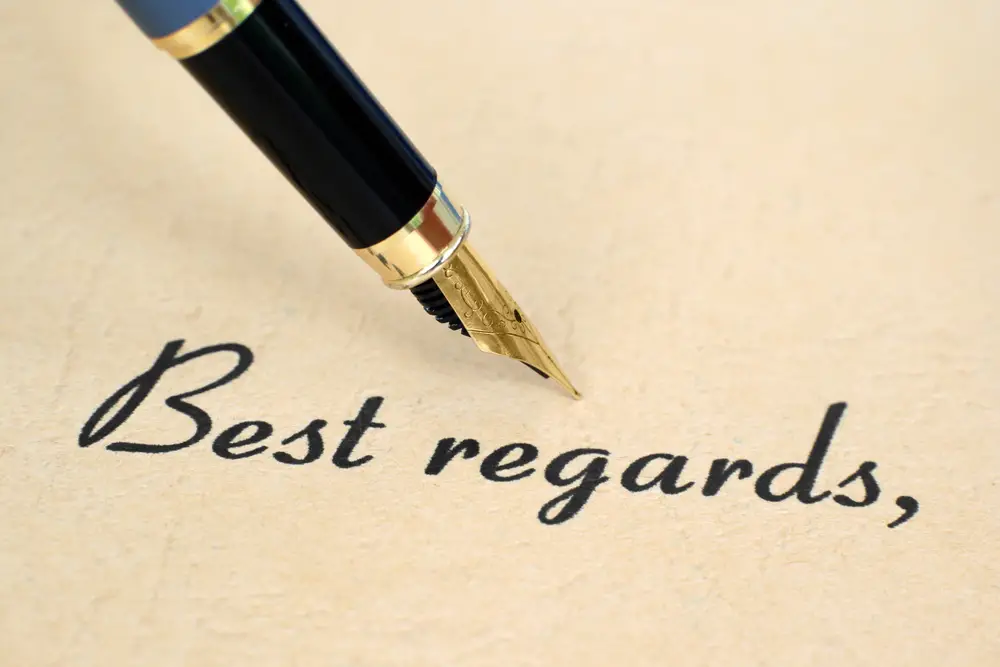Nowadays, letters have become popular and placed an important part in our social life. There are many types of letters; however, they will always follow a general structure. In this writing, we will share with you the standard structure of English letters so that you can apply them to any types of letters.
I ) THE GENERAL STRUCTURE OF ENGLISH LETTERS:
1.1. Heading
Heading, or the main subject, is the name of the letter you want to send
1.2. Inside address
Inside address (this section is usually used only in formal letters, not in informal letters) include the following points:
- Information of the letter writer: His address, telephone, fax or email is placed in the letterhead, in the center or at the right corner of the letter. You should avoid using your first name unless this is a personal letter because when writing a business letter, writers often use their company name.
- Date: in English letters, you should pay attention when writing the date. The British will write the day before the month (February 4, 2000) while the American will write the month before the day (February 2, 2000). To avoid misunderstandings, you should write down the detailed date, such as 5 February 2017 or February 2nd, 2017. The above writing not only avoids confusion but also shows more politeness than using numbers only.
- Name and address of the addressee: The way of presenting the addressee’s name, title, name of the company, and transaction address is similar to the way you present your information at the top of the letter. Note that the information of the recipient is located at the left corner of the letter instead of being on the right or at the center of the letter.
- Salutation: In this part, you can write “Dear …”
For examples: Dear Mr. Smith, Dear Mrs. Smith, Dear Miss Smith, Dear Ms. Smith
The appropriate title to use when writing to a man is Mr. For a woman, use Ms., even if you know the addressee’s marital status. Ms. is more professional than Miss or Mrs.
For a medical doctor or someone with a Ph.D., use Dr. as a title. Alternatively, you can also use “Professor” if you are writing to a university or college faculty member.
If you don’t know the gender identity of the person you’re addressing, use a gender-neutral greeting and simply include their first and last name, e.g., “Dear Tristan Dolan.”
1.3. Body
First, you have to give the reason for your letter, which can be presented in the following ways:
- Thank you for sending email to us
- I am writing this letter to inform you that…
- To confirm …
- To request about …
- I would like to inform you that…
- In reply to your request…
In the case the writer would like to refer to the previous email’s content:
- Thanks for your prompt reply
- With reference to you email sent … (mention the date here). Regarding to your email requesting for..
- According to our meeting yesterday…
- Based on our previous conversation…
- I would like to inform you that…
- In reply to your request…
In the case the writer would like to refer to make a suggestion or make a request for something:
- We look forward to receiving…
- Could you please send me…
- I would like to receive…
- I would be grateful if you could …
- Could you please provide me…
- I would like to request you to…

In the case the writer would like to refer to make an announcement:
- I am pleased to announce that…
- I would like to inform that…
- You will be pleased to learn that…
- I am afraid it would not be possible that…
- I would like to express my dissatisfaction with…
In the case the writer would like to offer assistance:
- Would you like me to…
- Please do not hesitate to ask/ contact me…
In the case the writer would like to make a promise:
- I will contact you again
- I will reply you as soon as possible
- Please contact me soon
In the case the writer would like to make notice about the attached files and make an end to the content section:
- Thanks for your help/ consideration
- Please find attached…
- Please see the enclosed file of…
- I enclosed the file as below…

1.4. Complimentary close
At the end of the letter, the writer can use the following sentences:
- We are looking forward to hearing from you
- Best regards
- Your sincerely
If the letter has attachments, you can write at the end of the letter a note about the number of file attached.
Ex: Enc: 2 ..
Finally, add the signature and full name of the writer. Depending on the type of the letter, you will have different expressions. In this way, you have followed the standard structure of English common letters.
II) SOME CAVEATS WHEN WRITING ENGLISH LETTERS
- Do not use abbreviations in the letter: You must write the full phrase, such as “I am, I have seen, I do not, I will, etc. “. Do not write ” I’am, I’ll, I don’t, I’ve seen”.
- Do not use local words, slang, and informal words, such as ” wanna, kid, dad, mate, etc.”. Except for very intimate letters.
- Regardless of the writer’s attitude, use “Dear” at the beginning of the letter and use “Please” when you make a request.
- Keep the letter short, concise, but informative. The sentence should includes the subject and convey the full meaning.
- Use correct punctuation marks and limit using or absolutely do not use the exclamation mark.
- Choose the letter closing that is appropriate for your type of letter:
– Sincerely, Regards, Yours truly, and Yours sincerely – These are the simplest and most useful letter closings to use in a formal business setting. These are appropriate in almost all instances and are excellent ways to close a cover letter or an inquiry.
– Best regards, Cordially, and Yours respectfully – These letter closings fill the need for something slightly more personal. They are appropriate once you have some knowledge of the person to whom you are writing. You may have corresponded via email a few times, had a face-to-face or phone interview, or met at a networking event.
– Warm regards, Best wishes, and With appreciation – These letter closings are also appropriate once you have some knowledge or connection to the person to whom you are writing. Because they can relate back to the content of the letter, they can give closure to the point of the letter. Only use these if they make sense with the content of your letter.






